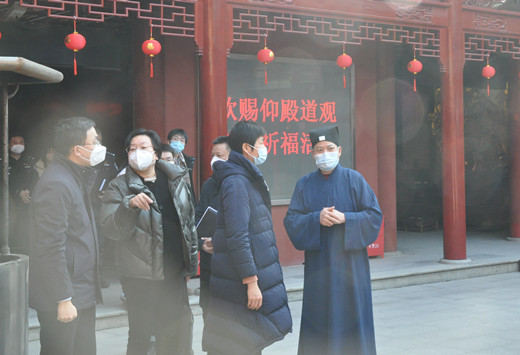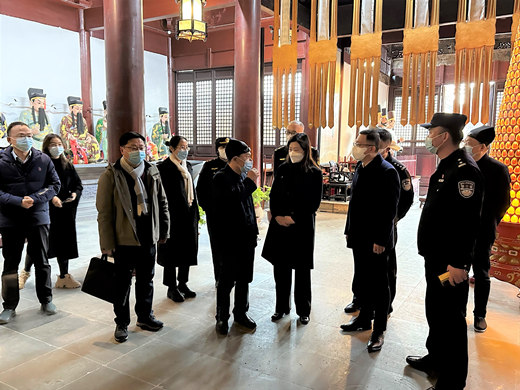New agents and new ethos of Daoism in China today(8)
江南app下载-官方网站Yang Der-Ruey
2015-10-20
Although it is still true that the vast majority of clients of Daoism are of subaltern class, we should acknowledge that there are more and more members of privileged class who command large r political, economic, and cultural capital, such as government officials, entrepreneurs, professionals, well-paid white-collar employees, urbanites, and especially younger males, have joined the rank. These energetic and capable newcomers from privileged class shattered the imagery of a clear-cut upper/lower division between a pyramid-like organized Daoist clergy and a disorganized mass of anonymous clients by inventing a range of novel ways to actively participate in the production of “Daoist culture”. The most committed, talented and resourceful ones among them could turn themselves into non-cleric disciples of some reputable Daoist masters and so become the constituents of the “lunar halo” of the existing Daoist establishment. Otherwis e, they could initiate their own “secular” enterprises for promoting Daoist culture such as the team of six who found the Ninth Heaven.com. As for those who are not that committed, talented, or resourceful, there are also some meaningful options, such as initiating/moderating/participating online forums for discussing Daoist culture or becoming temple volunteers. Beside s, we should also acknowledge here that there are many resourceful agents who maybe not really interested in Daoism as a religion but nevertheless beco me significant champions of “Daoist culture” because of the prospect of commer cial interests, which includes a huge array of corporations trading the material supplies as well as the skillful services pertaining to Daoism such as life-nourishing or longevity skills, geomancy, astrology, alman ac, and so on so forth. Consequently, the contour of Daoism as a social sphere in today’s China has changed from a rather straightforward hierarchical cy bernetic scheme to a complicated and dynamic neuronal map woven with a myriad of interconnected networks.
Indeed, the hierarchical cybernetic scheme is still a truthful depiction of Daoism in China today if we ignore all the real things on the ground and train our attention exclusively on the rather abstract and static judicial and administrative relationship between the officially recognized Daoism, i.e. the system of Daoist associations, and the authoritative branches of the State/Party that directly control it. However, if we are realistic and empirical enough, then it would be simply obvious for us that t he judicial/administrative relationship is nothing more than a ver y limited and remote aspect of the daily functioning of Daoism as a social sphere. What far more relevant and important thing is, actually, business. This remark doesn’t mean to say that Daoism in China today is a kind of business aiming at nothing more than mercenary gain. What it tries to point out is that, f irst of all, most of the agents involved in this social sphere nowadays tend to perceive, realize, and represent their own actions and interactions with each other in business terms, no matter the goal of these activities is money or some other moral values. There is no need to expound this point again sinc e we have already rendered it clearly while discussing the cases of Wanli Company and the Ninth Heaven.com.
Apart from the disposition to cocoon all kinds of serious pursuit in business terms, the above remark also tries to highlight the fact that the structural position of this social sphere, that is, the general pattern of its articulation with the other social sectors of Chinese socie ty, is increasingly fleeing from the political/ideological sector and drifting towards economic sector. Although it is indeed remarkable that the State/Party began to view Daoism as an important asset that can be mobilize d to produce political/ideological benefits since October 2006 and actually put it into practice immediately after this rhetoric change①, it is nevertheless more accurate to characterize the practices of the vast majority of agents involved in this sphere as the efforts for constructing a vibrant symbol ic economy centering on Daoism. That is to say, what the most of the agents are doing now is producing, distributing, marketing, or consuming “symbolic things” derived from Daoism or material things that are charged with symbolic values by referring to Daoism. The phrase “symbolic things” here refer s to things without any other use value except conveying a set of ideas and/or emotions, such as a statute of god, a book, a speech, a plan of interior design, or a piece of music. The most updated and probably also the most essential form of “symbolic things” relating to Daoism is undoubtedly the digitalized information about Daoism being uploaded to and transmitted via internet and cell phone. Certainly, it also includes all the more traditiona l forms such as what we can buy from a shop selling incense, paper money, an d other religious supplies. As for the “material things being charged with symbolic values by referring to Daoism”, it refers to physical things that have use values in its own right but their attractions to the customers do not come solely from their innate use values but also depend on, sometimes heavily, their symbolic values linking to Daoism. Nutrient supplements and herbal medic ines being claimed to be produced according to the magical subscriptions r ecorded in some Daoist classics of longevity skills are the classical examples of this sort. Besides, the all out carnivals or fair being staged simultaneou sly with religious festivals nearby popular Daoist temples are also good examples. The more updated form of this range is theme parks surrounding Daoist pilgrimage sites in scenic area, such as Wudang Mountain and mao Mountain, and “historic cultural neighborhoods” in old towns that are featured by Daois t temples being claimed as “cultural heritage”, such as the Watergate Mazu Temple in Wudu. Apparently, it is in this symbolic economy that is organized th rough business terms, not the cybernetic hierarchical scheme constructed by legal/institutional terms, where we can find out how all the ac tive agents, old and new, “legal” and “illegal”, really do Daoism in China today.
(本文作者:Yang Der-Ruey 原文为正一江南娱乐在线登录账号 国际学术会议论文 江南app下载-官方网站 专稿转载请标注来源)
更多链接


 |
|










 京公网安备 11010202006208号
京公网安备 11010202006208号